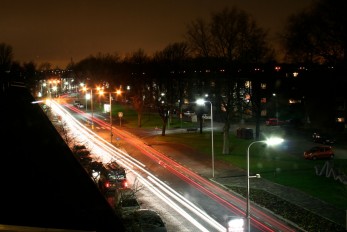Archive
- 17 Jan '17 Beleid UPC
- 10 Mar '15 The importance of postprocessing
- 02 Dec '14 Double exposure
- 23 Sep '14 50mm
- 27 Jun '14 Infinity – Ex-Host Fokko Muller
- 17 Jun '14 Infinity – The Past
- 10 Jun '14 Infinity – hidden features
- 20 Apr '14 Checkpoint
- 29 Nov '13 Tell a story
- 10 Nov '13 Halloween
Keep in Touch
Laziness
19 Feb '13

written by Nawid Sahebzadeh | photo © Nawid Sahebzadeh
There are times, especially in the winter, that it is hard to find time to go out and do some photography. The days are shorter and the weather is more cold. It is hard to keep yourself motivated. So the default position is to stay indoors and keep warm and occasionally browse through some of the pictures you have taken during the summer. And long for those warm days to come once more.
To keep photographing, under these limiting circumstances, sometimes you need to go to extremes and put on your boots and crawl through the snow, if there is any, and make some great shots by making sacrifices. Other times, you just need to become very very lazy. And as I prefer the latter over the former I tend to become lazy.
Laziness
Bill gates once said: “I always choose a lazy person to do a difficult job. Because he will find an easy way to do it”
I sometimes choose to photograph lazily as well. How do I do it? It’s easy.
There are several techniques you can use to create stunning pictures within the limits of your own laziness. Here are my top two:
Camera toss
There are two ways of doing a camera toss shot. A traditional way of doing it is to get a shot from a high angle. This is typically done with normal settings on the camera. Or preferably somewhat faster shutter speed than normal. This way the vertical movement of the camera does not cause any motion blur.
Another way, which I usually use is even more lazy than the first. I don’t like the idea of throwing my camera up into the air and hoping for a great picture. And then there is the risk of not being able to catch it. So I like to set up my camera to highest aperture and lowest ISO. I zoom out as much as I can and set my shutter speed to around 2 seconds. I then find a light source, the light fixture on my ceiling or a nearby candle, and press the shutter release and wave the lens in the general direction of the light source. In a way painting the sensor with that light. You may want to change the aperture and shutter speed to get the desired effect depending on your ambient light and the amount of light coming from your light source. You can do this without ever leaving the comfort of your own couch.
Long exposure
This technique is for those who don’t mind getting up and getting their tripods out. I used to live across a fairly busy street and you could see the cars coming and going from my living room window. So I used to put my camera on the tripod. Kill all the lights in the room and choose a fairly long shutter speed, sometimes even up to 5 minutes. If you do something like that at the right interval and there are just enough cars going past, you can get amazing results, with relatively little effort.

So from now on, whenever you hear someone complaining that they are not motivated or they don’t have time to do some photography, just tell them to be lazy and everything will be okay.

